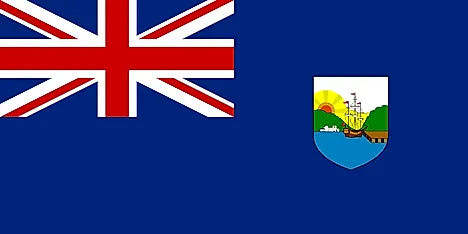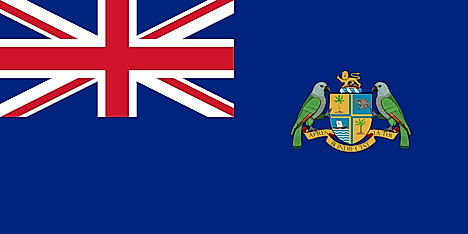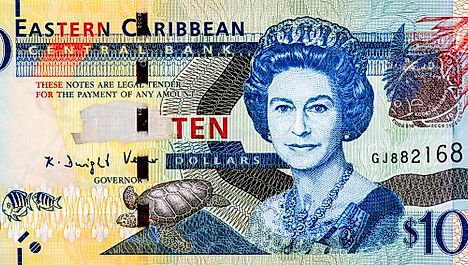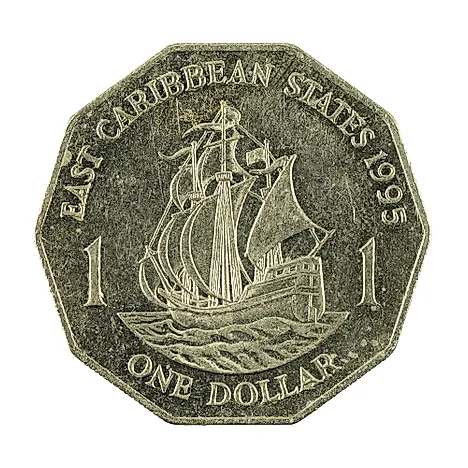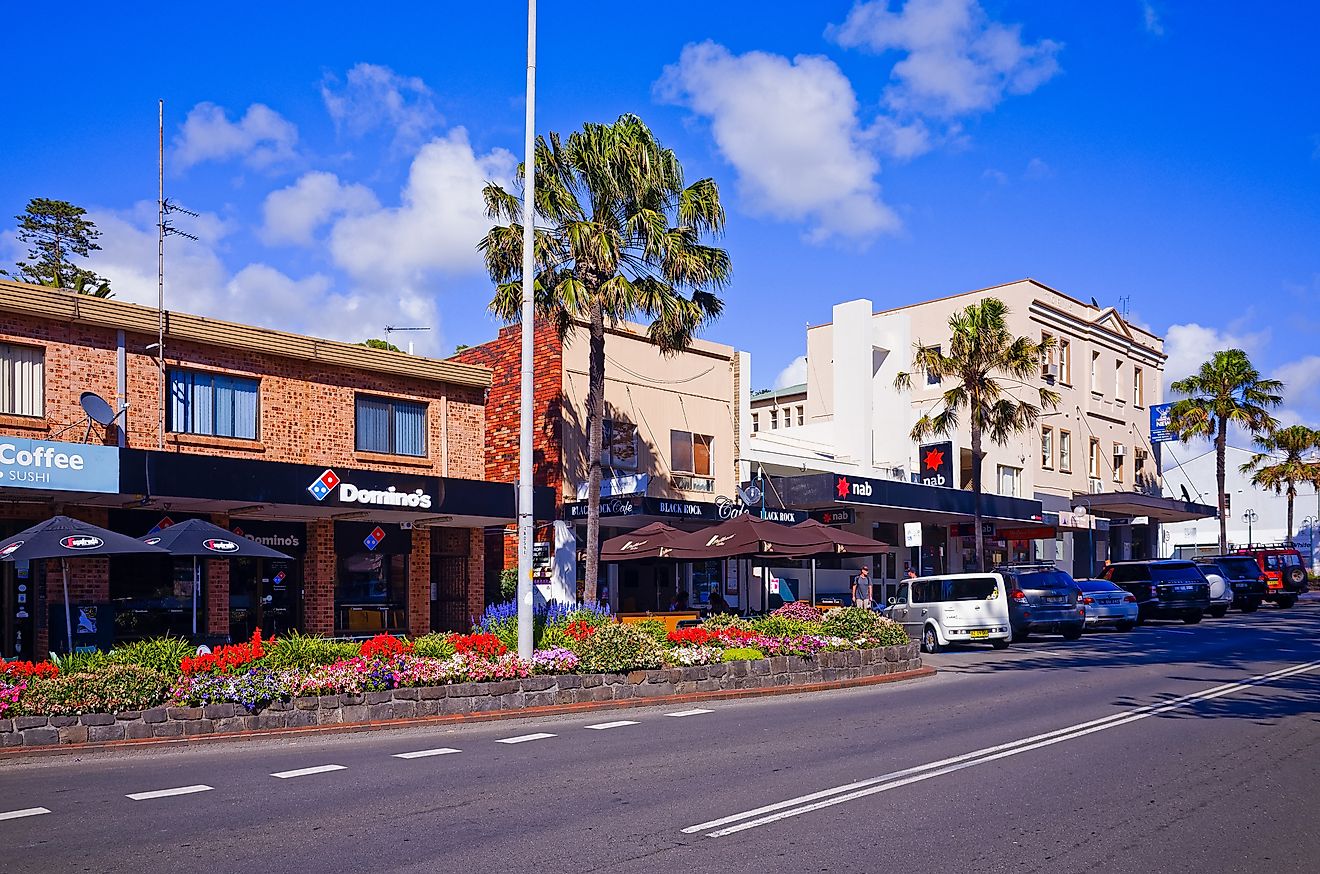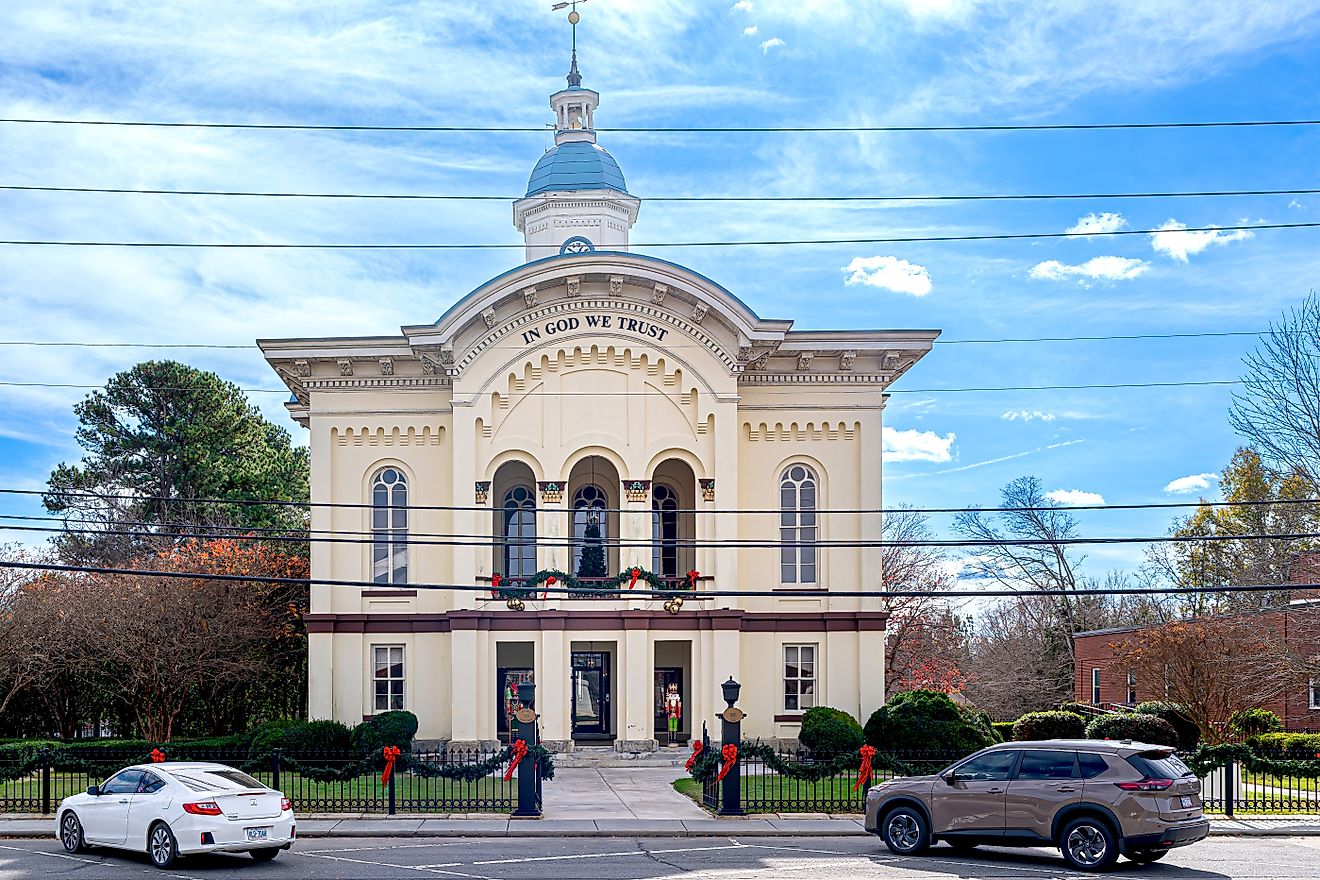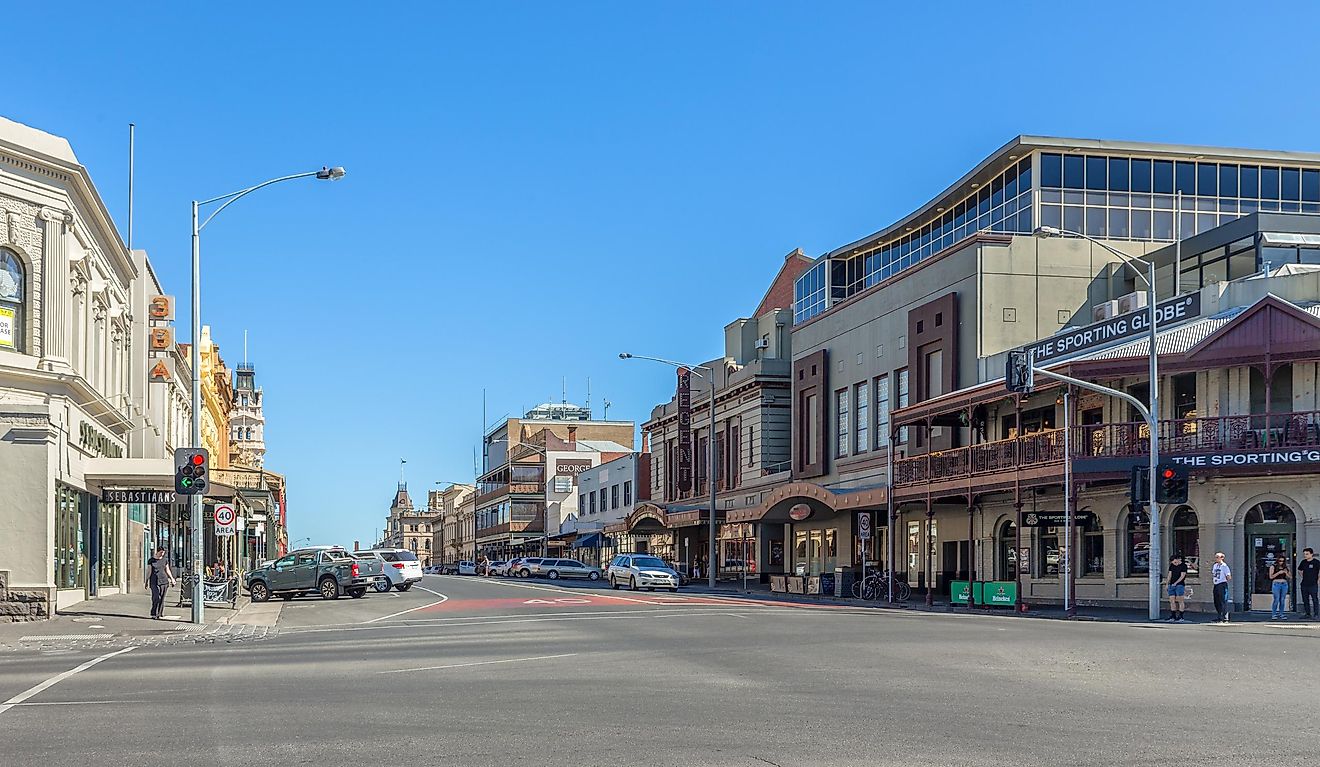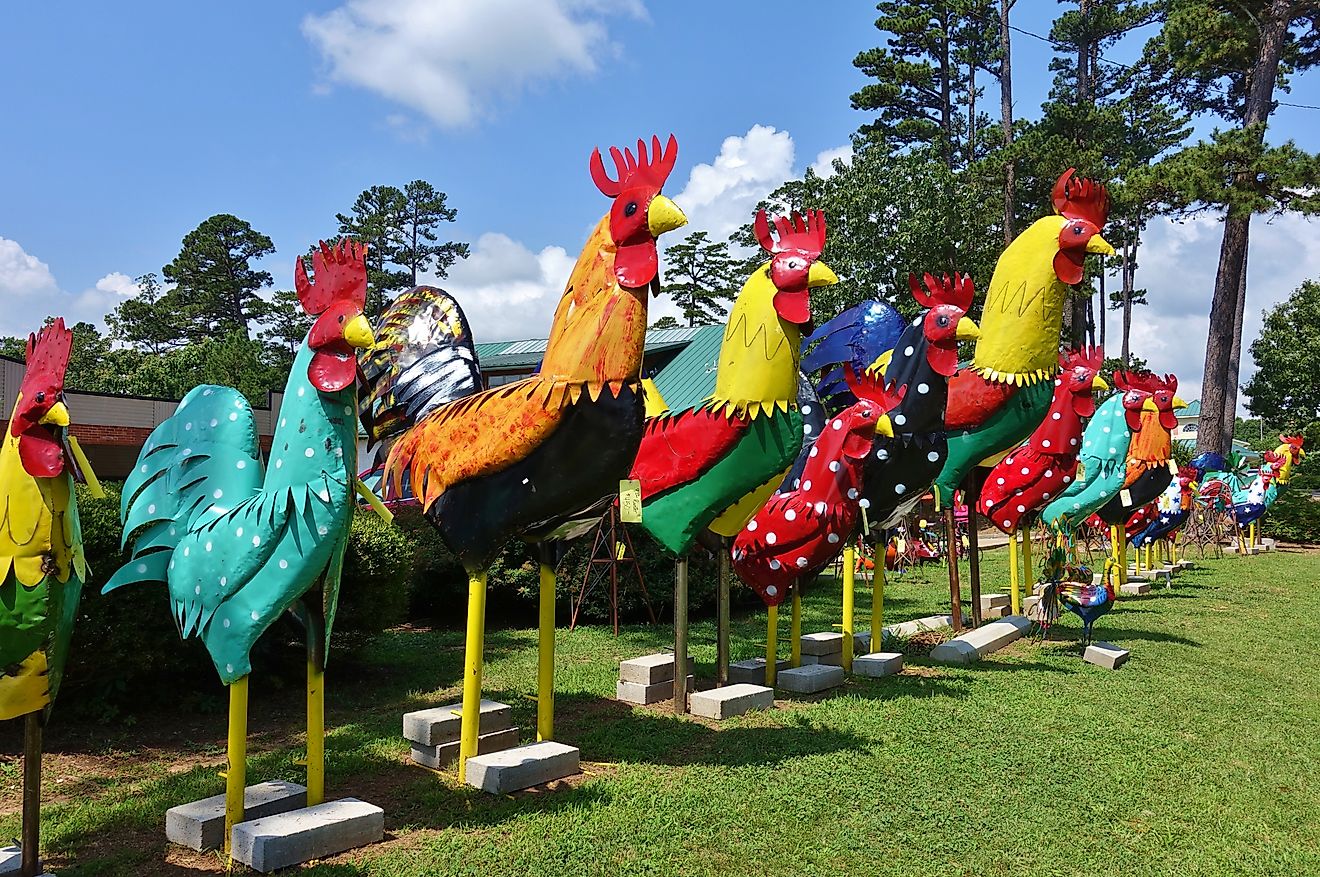Flags, Symbols & Currency of Dominica
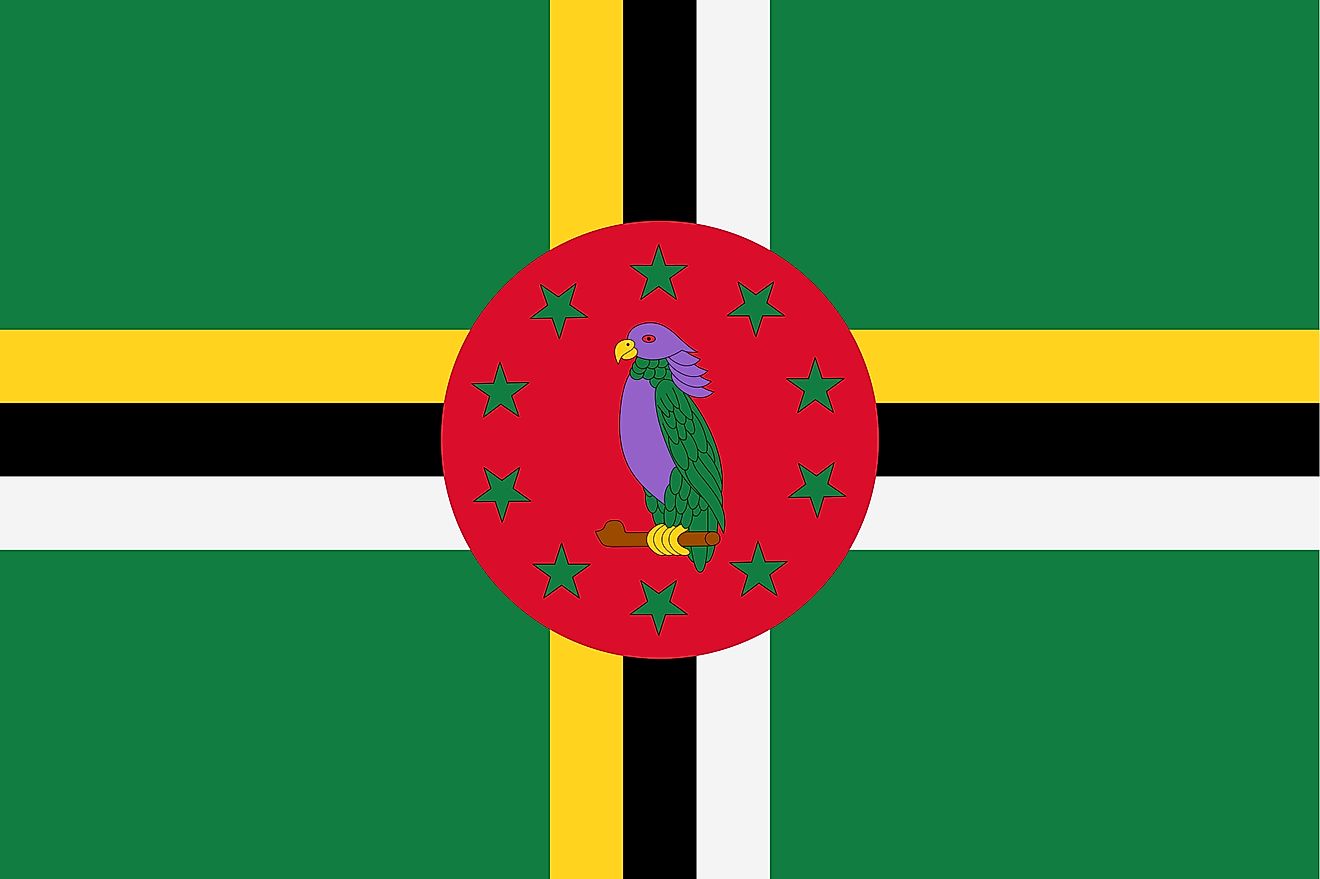
The National Flag of Dominica was officially adopted on November 3, 1978. The flag was designed by a playwright named Alwin Bully, at a time when the country was preparing for independence from the British colonial masters.
The National Flag of Dominica features a green banner with a centered cross stretching to the edges of the flag. The cross has three equal bands - the vertical band is yellow (hoist side), black (middle), and white (last) and the horizontal band is yellow (top), black (middle), and white (bottom). Superimposed in the center of the cross is a red disk containing a purple Sisserou parrot perched on a brown branch and overlooking the hoist side. The Sisserou parrot is considered the national emblem in Dominica and is an endangered species that is endemic to the country. The parrot has a purple chest and head, yellow claws, and green wings. 10 green five-pointed stars surround the parrot.
The 10 stars represent the 10 administrative divisions (parishes) of the island. The green color symbolizes the island's lush vegetation. The triple-colored cross represents the Holy Trinity and the Christian religion on the island. The yellow color denotes sunshine, the main agricultural products (citrus and bananas), and the native Carib Indians (Kalinago). The black color symbolizes the rich fertile soil of the island and the African heritage of most citizens. The white color signifies the pure waters of the rivers, waterfalls as well as the purity of aspirations. The red-colored disc signifies social justice. The flag has a width-to-length proportion ratio of 1:2.
History of the Flag of Dominica
Being a British colony, Dominica was mostly represented by the colonial flags. The flags were mainly British blue ensigns with the Union Jack displayed in the canton along with the colonial coat of arms on the fly side. The first version of the flag used from 1978 to 1988 did not bear significant differences with the present-day flag. The only difference was the parrot, which faced the fly end instead of the hoist side. The colors of the cross were rearranged in 1981 and the parrot was rearranged in 1988 to face the hoist side of the flag. In 1990, the stars of the flag were given a darker green shade as observed in the present-day flag.
Symbols of Dominica
The National Coat of Arms of Dominica

The current official National Coat of Arms of Dominica was adopted on July 21, 1961. It consists of a shield that has two Sisserou Parrots (Amazona imperialis) supporting it. A golden lion is placed on the top of the shield. The quadrants of the shield show a palm tree, a frog (Leptodactylus fallax – critically endangered and native to Dominica), a canoe sailing on the Caribbean Sea, and a banana tree bearing mature fruits. Below the shield is the National Motto: "Après Bondie C'est La Ter" meaning "After God is the Earth".
National Motto: "Après Bondie, C'est La Ter." ("After God is the Earth.")
National Anthem
- Anthem Title: "Isle of Beauty, Isle of Splendour"
- Music Composer: Lemuel McPherson Christian OBE
- Lyricist: Wilfred Oscar Morgan Pond
- Date of Adoption: 1978
"Isle of Beauty, Isle of Splendour" is the national anthem of the Commonwealth of Dominica. The music of the anthem have been composed by Lemuel McPherson Christian OBE. The lyrics of the anthem have been authored by Wilfred Oscar Morgan Pond. It became the national song when Dominca attained statehood in 1967. The national song was officially adopted as the national anthem upon independence of Dominica in 1978.
"Isle of Beauty, Isle of Splendour"
Isle of beauty, isle of splendour,
Isle to all so sweet and fair,
All must surely gaze in wonder
At thy gifts so rich and rare.
Rivers, valleys, hills and mountains,
All these gifts we do extol.
Healthy land, so like all fountains,
Giving cheer that warms the soul.
Dominica, God hath blest thee
With a clime benign and bright,
Pastures green and flowers of beauty
Filling all with pure delight,
And a people strong and healthy,
Full of godly reverent fear.
May we ever seek to praise Thee
For these gifts so rich and rare.
Come ye forward, sons and daughters
Of this gem beyond compare.
Strive for honour, sons and daughters,
Do the right, be firm, be fair.
Toil with hearts and hands and voices.
We must prosper! Sound the call,
In which ev'ryone rejoices,
"All for Each and Each for All."
The Currency of Dominica is the Eastern Caribbean dollar
The current official currency of The Commonwealth of Dominica in the Eastern Caribbean dollar (EC$, XCD). The currency is also shared with Saint Lucia, Antigua and Barbuda, Montserrat, Saint Vincent, and the Grenadines, Saint Kitts and Nevis, Grenada and Anguilla, and all are members of the Eastern Caribbean Currency Union.
Dominica adopted the Eastern Caribbean dollar currency in 1965. The Eastern Caribbean Central Bank has the responsibility of issuing the currency to all of its users. The bank first issued the EC$ in banknotes until 1981 when the first coins were circulated. Since Dominica is a member of the Commonwealth of Nations, its currency has the imprint of Queen Elizabeth II who is the head of the Commonwealth. While the eastern Caribbean dollar is Dominica’s official currency, other foreign currencies including the euro, the British pound, and the US dollar are also accepted as legal tender. The Eastern Caribbean dollar exchanges at a rate of US$1 to EC$2.70; a rate that has been fixed since 1976.
One eastern Caribbean dollar has 100 subunits (cents) and comes in both coin and banknote form.
Coins
Coins are circulated in denominations of 5, 10, and 25 cents and 1 and 2 dollars.
Banknotes
Banknotes are circulated in denominations of 5, 10, 20, 50, and 100-dollar notes.
Historical Currencies of Dominica
The use of currency in Dominica can be traced back to the occupation of the Europeans in the eastern Caribbean as early as 1704. Most of the currencies previously used in Dominica were shared among the eastern Caribbean colonies of the British. Some of these currencies include the Spanish and the Mexican dollar. Afterward, the British Sterling was introduced in 1825 through a royal edict. In 1949, the British government introduced the British West Indies dollar as the official currency in its colonies. The dollar was exchanged at a rate of one dollar for every 4 shillings and two pence. The British West Indies dollar (BWI$) was introduced into the colonial territories of the British West Indies as an official legal tender in 1949, fourteen years after the first issue. The BWI$ existed as banknotes until 1955 when the first coins were issued, replacing the British sterling coins. The British Caribbean Currency Board dealt with the supply and stability of the currency. While the currency eastern Caribbean dollar replaced the BWI$ in 1965, the coins of the dollar continued circulating until they were replaced in 1981, making the BWI$ fully defunct.
